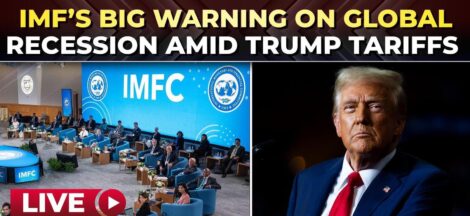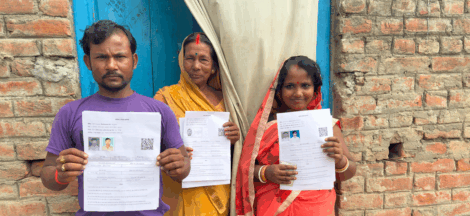By Dr K R Shyam Sundar
The Economic Survey (ES) 2022-23 prepared the ground for the focus points in the Union Budget 2023-24 presented on February 1…
Labour law reforms were implemented. It is not a question of the Union Government’s failure. It is the duty of the Union Government to pass laws and frame Rules under the same, which it has done, even if in a delayed manner. Now, it is the state governments that should pick up the bearings. It is the state governments that have failed. Thirty-one state governments have pre-published the Rules under the Wage Code, 28 for the Industrial Relations Code, 28 relating to the Social Security Code, and a meagre 26 for the Occupational Safety, Health and Working Conditions Code.
The ES 2023 is a mere information provider with little analytical thrust, at least on matters relating to labour. Both the social partners — employers and the trade unions — are frustrated with both the framing process, and the framing of the laws themselves and their implementation. It weighs heavily over the minds of the economic players as to what is the roadmap regarding the labour codes. However, the ES ignores the elephant in the room! People with little or no academic training seem to have written the section on ‘Progressing Labour Reform Measures’.
The argument continues to be that in response to Supreme Court’s directions, the Union Government created the eShram portal for creating a national data base of unorganised-sector workers verified through Aadhar. The government writes in a self-congratulatory manner, as if it was imaginative enough to take this historic step; this narrative has crept into the political economy discourse too.
What were the directions of the Supreme Court? In what ways could the government have responded to the same? How much has been fulfilled transactionally so far? What are the measures taken for dissemination of this vital governmental function? The answers to these questions don’t seem to matter. More importantly, what is happening to migrant workers? This was the question that dominated media discourse thanks, ironically, to the pandemic.
The ES is silent on this important issue. It contends that 280.5 million out of the possible 380–400 million unorganised workers have registered on e-Shram. If we see ‘Figure VI.2’ on page 155, the registrations rose initially — up to January 2022 — and then almost plateaued, with a slight tilt on the rise. Again, there is no analysis of these trends. The message seems to be that the Union Government has done the job and if things have failed or are moving at a snail’s pace, then it is not its fault. The otherisation of accountability is the bureaucratic answer to probing questions. Then, the ES meanders into the merits and achievements of Aadhaar!
On the labour market front, ‘broad-based improvements’ have taken place, as evidenced by both supply and demand side databases. ‘Table VI.4’ on page 158 details the macro trends in the conventional indicators of the labour market like participation, employment and unemployment rates. It is a rosy picture, indeed, especially the fantastic rise in the female labour force or workforce participation to around 27 per cent. Who cares for data by the Centre for Monitoring Indian Economy on the retreat of female labour participation, says the government; truth resides in government figures, which need to be relied upon, however scanty and unreliable they are.
The impressive rise in self-employment that the government has indicated shows huge potential for the future of self-help groups (SHGs), which have been glorified. Again, the othering is clearly visible here. The message seems to be: look, we can produce wage employment, regular or casual, to some extent; is it not exciting or even the duty of the people to take upon themselves to be economically active? The SHGs come in handy here. They also empower, unlike female employment, don’t they?
I am not commenting on the demand-side government survey — the Quarterly Employment Survey (QES) — which I regard as sobering exercises by a government in depression. No employer will contend that they employ more than three-fourths of their workers as regular workers, not even the historic angel Tata Steel! And contract labour, as per the survey, was less than ten per cent of the total. The irony is that immediately comes the revelation of reliance on data provided by the Annual Survey of Industries, 2019-20. The ES writers could have just flipped the macro volume, only to know that the QES figures are quite doubtful. Honesty about being wrong is more admissible than self-applauding lies.
Section 6.39 in the ES speaks of the rising average size of the factory; unlike many famous analysts, it has used ‘persons’ rather than employees or workers for analysis. The first finding is interesting. The critics of the so-called labour laws argue that they keep the size of the factory small so as to deny economies of scale. Now, the ES has admitted that the average size of the factory has been gradually rising, which is true. But labour laws have not actually changed so far. So are labour laws still a villain?
Even then, two questions arise. If employment has risen, what about the quality of employment? What about their real wages, according to the components of workers? In other words, what is the share of wages in employment which is both productive and redistributive? The share of nominal wages in the nominal gross value added declined from 20.53 in 1991-92 to 14.97 in 2001-02 and to 14.02 in 2018-19 (it was 15.41 in 2019-20). Leave economic aspects to the non-State agencies, which are principally private sector players, and things will sort themselves out. For some time, the variables behaved in partial support of labour law reforms, and now they are reversing.
I think that the ES rightly put forward the evolutionary and private sector participation growth model. That is the main reason — a socially invaluable aspect — and not just variables like unemployment, equity, price stability, and so on.
If employment has risen, what about the quality of employment? What about their real wages, according to the components of workers? In other words, what is the share of wages in employment which is both productive and redistributive?
So, there is a deep and uncalled for cut in funds for the Mahatma Gandhi National Rural Employment Guarantee Act, 2005 (MGNREGA). It is unfathomable that despite consistent stories by Yogima Seth Sharma of Economic Times, the government has argued that reliance on it has been declining. Again you see the othering coming in. Housing and water works will replace MGNREGA, and eventually the other variables.
Anyway, we know that the current regime will never politically endorse any popular scheme of the previous regimes or opposition political parties. When non-profit organisation Oxfam India reports have shown high economic inequality, our government has given bouquets to the super rich by reducing their tax burden to prevent money going out to tax havens – will that money still not go? To justify that, some tax sops have been given to the lower classes.
By the way, most middle class people rely heavily on an exemptions-led tax regime as the capitalist class has flooded the market with equated monthly instalments, which in fact has also hurt the capacity to strike! The argument is that investment in infrastructure and capital expenditure would take care of unemployment. I am yet to find the macroeconomic study which provides, using the multiplier approach, the extent of employment generation.
It is a budget which cheers all a little if not probed closely. Ideas are bad for cordial industrial relations! (IPA Service)
** Dr. K.R. Shyam Sundar is a Visiting Professor at the Impact and Policy Research Institute.
Courtesy: The Leaflet



